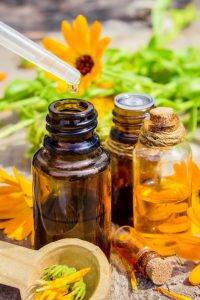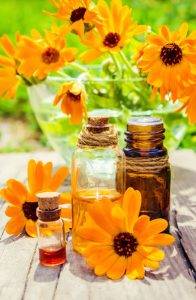
Calendula – Calendula officinalis
Description of marigold:
Calendula officinalis L. Calendula officinalis officinalis – Compositae Calendula officinale (Calendula officinale officinale) – Calendula officinale (Calendula officinale) – Annual plant about half a metre tall. Cylindrical stems, velvety-hairy, with leaves arranged in alternate positions. The leaves are obovate, covered with soft hairs. Its flowers are in a yellowish cluster; both the lime and petal flowers are yellow, the lime flowers being three-toothed and tongue-shaped, while the disc flowers are cylindrical and five-toothed.
Occurrence:
Native to the Mediterranean, it is cultivated as a garden plant in our country and is sometimes found wild.
 Part of the plant to be collected:
Part of the plant to be collected:
 The yellow petal leaves are collected, less often the whole herb is used.
The yellow petal leaves are collected, less often the whole herb is used.
Active ingredient:
Calendulin, bitter substances and malic acid salts.
Harvesting and drying:
Flowers from June until late autumn. The petals should be collected before the flowers fully open in dry weather. Harvesting is done by tearing off the whole inflorescence and plucking the petals one by one. Since the yellow colour of the flower turns brown very easily, the material collected should be dried immediately. Drying should be done at a mild heat and the dried plant should be stored in a dry place. If the whole herb is collected, it should be done before the flowers have fully opened.
Cultivation:
The plant, which is not fastidious in soil, is propagated by sowing seeds. The seeds are sown in March-April at a spacing of 45 cm between the rows. The seeds are planted in March to March and are sown in 45 to 45 kg of seed per catastrophic acre. Yield 2,5-3 q flowers.
 Processing and marketing:
Processing and marketing:
Calendula is used less frequently in medical practice today. It is mainly used in homeopathy and folk medicine. It is also used as a component of some special potions and in the making of paints. Calendula is also used to adulterate arnica. Source: Dr. Ferenc Darvas and Dr Gyula Magyary-Kossa,Domestic herbs, their production, marketing, effects and medicinal uses
